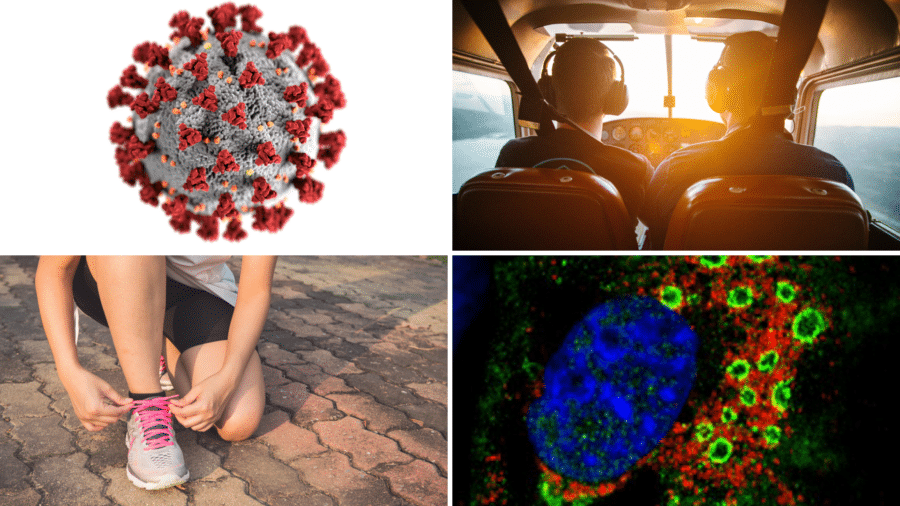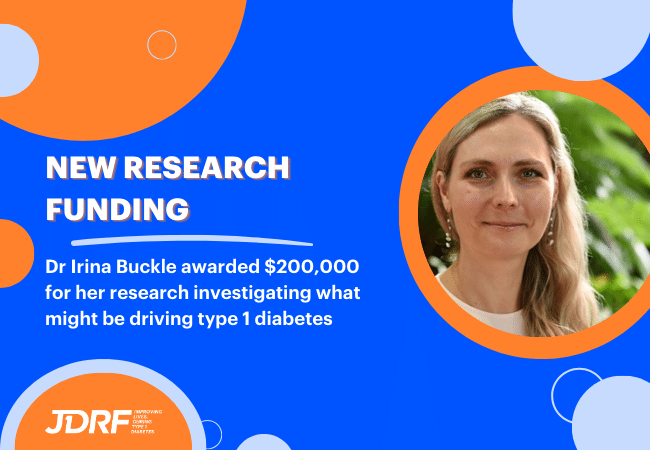
Research Roundup: 5 Top Stories from EASD Annual Meeting 2020
The European Association for the Study of Diabetes (EASD) annual meeting brings together the top researchers from around the world to discuss the latest findings in diabetes research. This year, the meeting took place virtually for the first time, and JDRF researchers from Australia took centre stage to share their exciting results. Here’s our roundup of the biggest breakthroughs and most interesting stories from EASD 2020.
Positive results for closed-loop technology
Prof David O’Neal from the St Vincent’s Hospital in Melbourne presented new results from his JDRF-funded at-home clinical trial. The study found that people with T1D using a closed-loop system had improved time–in–range and HbA1c, compared with those using insulin injections and finger-prick glucose monitoring. The closed-loop system didn’t compromise sleep quality, and people using it also felt more positive about their diabetes and had a greater sense of satisfaction.
Breakthrough molecules
JDRF-funded researchers have made breakthroughs by studying two different kinds of molecules in people with T1D.
Prof Merlin Thomas from Monash University has found that a protein in the body called RAGE plays an important role in T1D complications. When RAGE is absent from cells, this can protect against the development of complications like kidney, eye and heart disease. Prof Thomas and his team have also found new ways to target RAGE with potential therapies, meaning the protein will be an important area of focus for future studies on the prevention of T1D complications.
Researchers in Italy have found 4 distinct patterns of microRNAs – molecules that help control our genes – in the blood of people with T1D. These patterns act as a kind of molecular profile of a person’s cells, and researchers are planning more experiments to find out what these different profiles mean. In the future, this research could lead to new personalised therapies that target a particular microRNA profile.
A groundbreaking protocol keeping pilots with T1D safe
Three European countries, including the UK, have introduced a groundbreaking protocol to help people with insulin-treated diabetes work safely as commercial pilots. The protocol involves a “traffic light” system of classifying blood glucose levels and alerting pilots when levels drop too low or rise too high. The use of the protocol saw out of range readings drop from 5.7% in 2013 to just 1.2% in 2019. Additionally, the three countries that have implemented the protocol now have the largest number of commercial pilots with insulin-treated diabetes in the world.
Tailoring exercise guidelines to individuals with T1D
Dr Klara Pickova offered a combined perspective on exercising with T1D, speaking as both a clinician and a person with diabetes. While physical activity plays an important role in reducing HbA1c and preventing complications, Dr Pickova stressed the importance of avoiding a one-size-fits-all approach to exercise guidelines for people with T1D. There are many factors that influence glucose levels during exercise, including the type and duration of activity, baseline insulin and glucose levels, personal fitness and what devices a person is wearing. Dr Pickova encouraged healthcare professionals to consider these factors, as well as the kinds of exercise a person enjoys, to better tailor guidelines to the individual.
Updates on COVID-19 and T1D
Researchers also discussed the latest research on T1D and COVID-19, including results from the UK earlier this year that showed older people with T1D and high HbA1c are at risk of worse outcomes from COVID-19. However, the researchers reiterated that children with T1D are at no higher risk than those without T1D. Researchers in Europe found that while COVID-19 may increase blood glucose fluctuations, most children were able to manage this safely at home.
Prof Catarina Limbert discussed the potential for COVID-19 to cause hyperglycaemia in people without diabetes, but said that the balance of evidence points to COVID-19 not causing T1D in someone who hasn’t had it before. However, many viruses have a small association with the development of T1D in children, and it’s possible that SARS-CoV-2, the virus that causes COVID-19, will eventually be added to this list.




